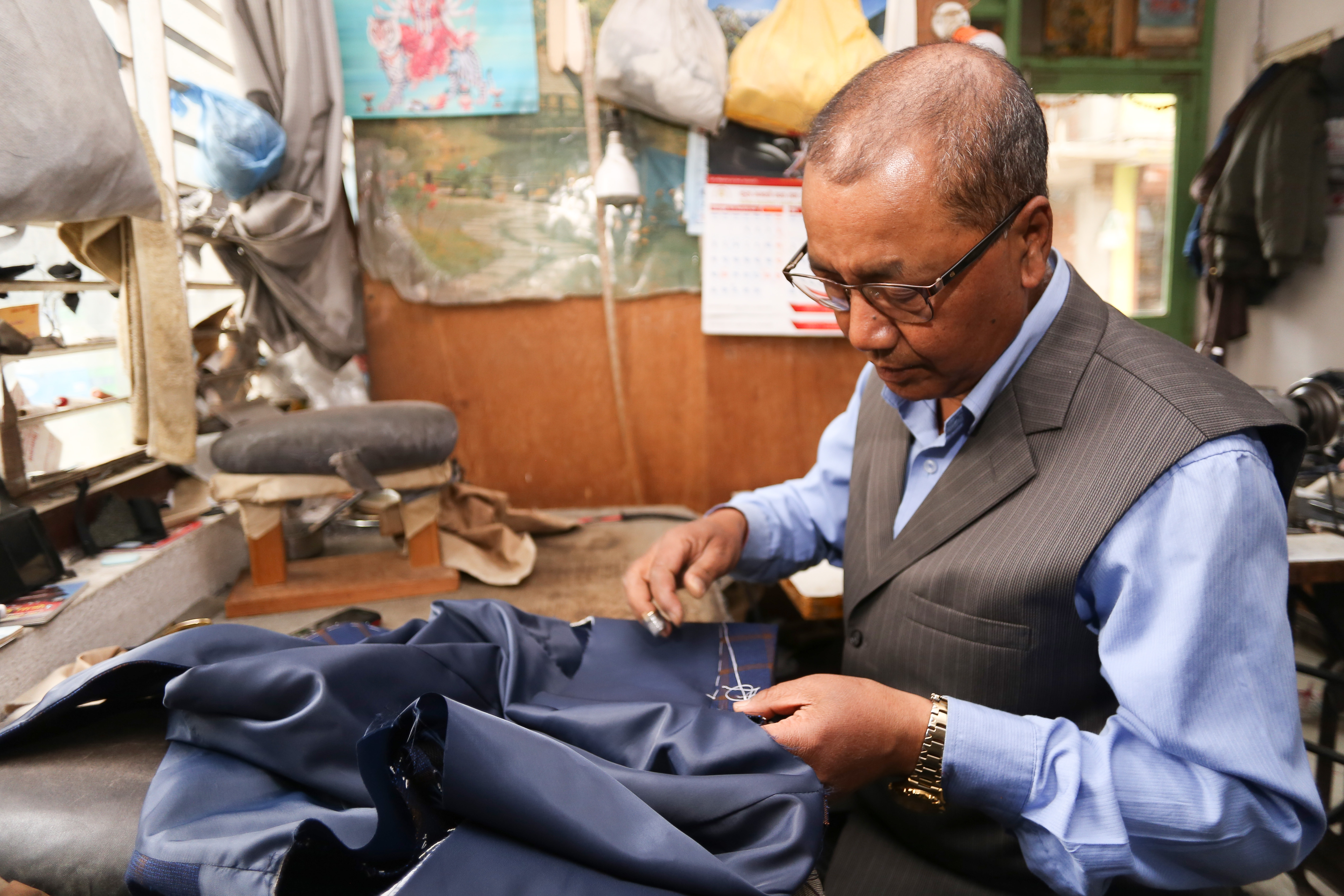Tailor Perth Insights: Discover the Art of Fine Tailoring in Perth
Tailor Perth Insights: Discover the Art of Fine Tailoring in Perth
Blog Article
Understanding the Tailoring Process: From Fabric Selection to Final Suitable for the Perfect Wardrobe
The tailoring procedure is an intricate interaction of art and science, starting with the critical choice of material selection and culminating in the precise modifications of final installations. Each textile type brings distinct qualities that affect not just the aesthetic allure but also the garment's durability and suitability for numerous occasions. Comprehending the subtleties of tailoring strategies can boost one's wardrobe to unmatched levels of sophistication. As we discover these aspects even more, one should think about how also the smallest information can dramatically influence the total result of one's individual style.
Significance of Textile Selection
Selecting the appropriate fabric is vital in the customizing process, as it directly affects the convenience, resilience, and general visual of the final garment (tailor perth). The selection of material establishes the structure for the garment's design, efficiency, and capability. Various textiles possess unique properties, such as stretch, weight, and breathability, which can considerably influence just how the garment drapes and fits the body
Moreover, material selection impacts the garment's durability and convenience of treatment. Premium materials can withstand deterioration, preserving their look and framework with time, while lower-quality products may cause pilling or fading. Furthermore, the best material contributes to the garment's capability to shift throughout periods and events, thus enhancing flexibility.
A tailored piece made from an ideal textile not just showcases craftsmanship but also boosts the wearer's self-confidence. Comprehending the nuances of textile choice is critical for any kind of customizing endeavor. It makes certain that the end product not just meets the visual desires of the customer but additionally lines up with useful demands, thereby attaining a harmonious equilibrium between type and function in the customized wardrobe.
Kinds Of Fabrics and Their Uses
Recognizing the numerous types of textiles offered is essential for making notified choices during the customizing process. Each material has distinct characteristics that dictate its viability for particular garments and celebrations.
Its flexibility enables it to be customized right into every little thing from t-shirts to gowns. Its all-natural elasticity assists garments maintain shape over time.
Silk exhibits luxury and is light-weight, making it ideal for eveningwear and delicate blouses; nevertheless, it needs mindful handling because of its delicacy. Bed linen, with its distinctive coating, is a preferred choice for warm climates, providing a airy and crisp feel, but it wrinkles easily, which may affect the garment's appearance.
Synthetic fabrics, such as polyester and nylon, deal sturdiness and resistance to creases, making them appropriate for daily wear and energetic garments. Comprehending these material types and their residential or commercial properties enables far better decision-making, making certain that each customized item not just fits well however likewise lines up with the designated function and occasion.
The Tailoring Techniques Discussed
The art of tailoring depends on a range of methods that transform material right into well-fitted garments. Central to this procedure is pattern preparing, where a dressmaker creates templates based on the customer's dimensions and preferred style. This initial action ensures that the garment will fit the user appropriately before any reducing happens.
When patterns are developed, reducing techniques enter play. Accuracy is vital as inaccuracies can bring about misfitting garments. Tailors usually make use of various reducing techniques, such as single-layer cutting for detailed styles and multiple-layer cutting for effectiveness on basic patterns.
Basting is another vital method, enabling tailors to briefly sew material pieces together for an article initial fitting. This method uses the chance to examine the drape and overall shape before final sewing.
Seaming techniques, consisting of flat-felled seams and French seams, improve the garment's resilience and visual appeal. Tailors likewise use techniques such as interfacing and extra padding to provide framework and form to particular website here locations, like collars and shoulders.
Finally, finishing methods, consisting of hemming and edge ending up, ensure the garment's durability while giving a polished look. With each other, these strategies form the foundation of reliable tailoring, leading to elegant, custom-fit clothing.
Suitable Adjustments and Considerations

Trick factors to consider consist of the shoulder fit, which should neither sag nor limit movement, and the sleeve size, which need to enable comfortable arm motion while keeping a refined look. In addition, modifications at the waistline can improve the shape, with options to allow out or take in textile as required.
The rise of trousers is an additional important element; it should rest conveniently above the hips without creating discomfort, permitting simplicity of movement. Hemming sizes for both pants and skirts must reflect the user's favored design while appreciating percentages.

Preserving Your Tailored Apparel
Proper maintenance of tailored garments Source is necessary to protecting their fit and appearance gradually. To make certain long life, normal cleansing is paramount. Always follow the care label instructions, which may advise completely dry cleansing for fragile materials or maker washing for more durable materials. Avoid constant laundering, as this can put on down the textile and modify the garment's shape.
Storage is equally crucial; use padded hangers for jackets and layers to keep shoulder framework, and store trousers folded up neatly or hung to avoid creasing. Safeguard garments from direct sunlight, which can fade shades and damages fibers.
Additionally, periodic examinations for minor repair work can prevent bigger problems. Check for loosened buttons, fraying joints, or indicators of moth damage, addressing these troubles quickly to maintain the garment's stability.
Finally, consider seasonal turning. Wearing customized pieces in small amounts enables materials to recoup, prolonging their lifespan. By carrying out these maintenance methods, you can make sure that your tailored garments continue to be as beautiful as the day you initially wore them, boosting your perfect closet for many years to come.
Final Thought
The customizing procedure, encompassing fabric selection, competent methods, and specific suitable adjustments, plays an important duty in developing garments that boost both convenience and design. Comprehending the value of maintenance extends the life of tailored garments, strengthening their worth in a well-curated closet.
Selecting the ideal material is critical in the customizing procedure, as it directly influences the comfort, sturdiness, and overall visual of the final garment. The choice of material sets the foundation for the garment's performance, performance, and design. Various textiles possess distinct residential properties, such as stretch, breathability, and weight, which can dramatically influence exactly how the garment drapes and fits the body.
The art of customizing relies on a selection of techniques that transform fabric into well-fitted garments.The tailoring procedure, encompassing textile selection, competent techniques, and exact fitting changes, plays an important role in producing garments that improve both convenience and style.
Report this page